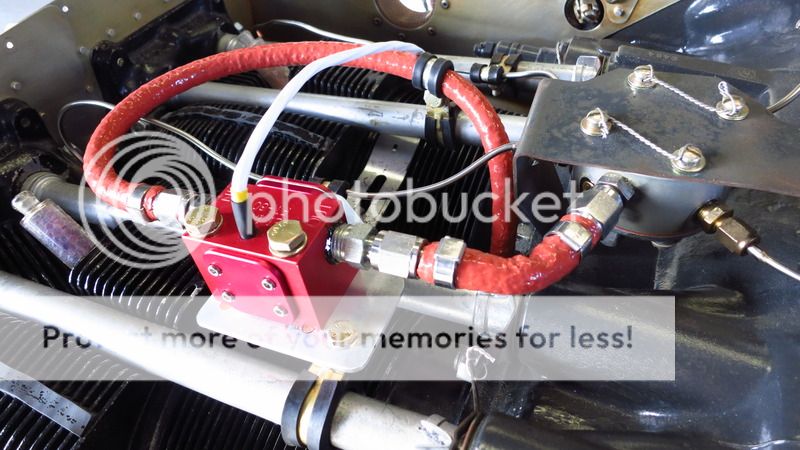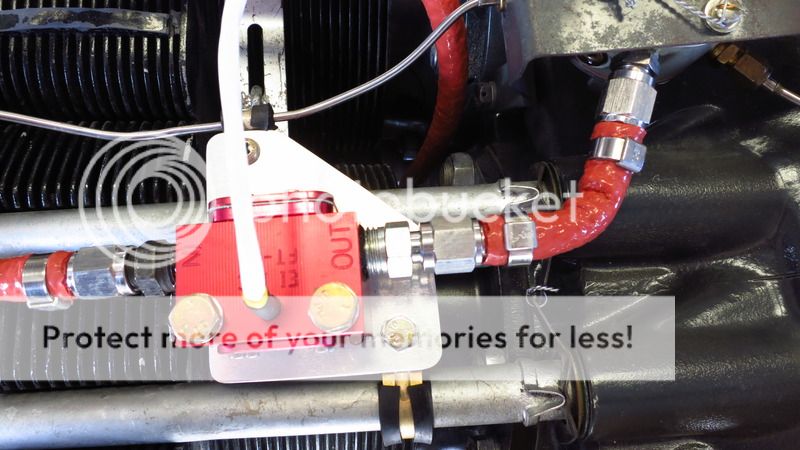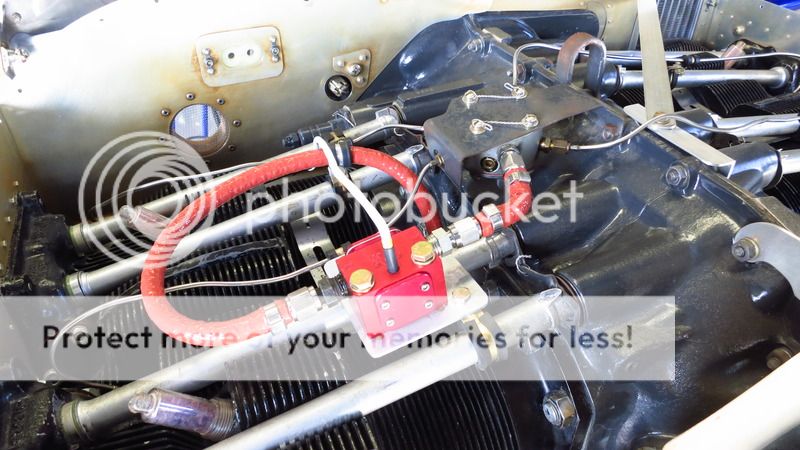Tom at TS Flightlines made us up a neat little adapter for connecting the Red Cube at the flow divider as seen in the photos below. We've been hearing good things about mounting the Red Cube here so we thought we'd give it a try. Looks like a good solution. Reports indicate less vaporization for hot starts with this location, smoother running engine after a hot start. We'll see.
We mounted the Red Cube on a small piece of .090 between two Adel clamps, one was already there for the s.s. fuel line. Worked out well, good support for the Red Cube and the adapter to the flow divider. Tom made up all of our hoses and did a great job as usual! We had to get a longer than normal #4 hose between the servo and FT-60 as you can see below.
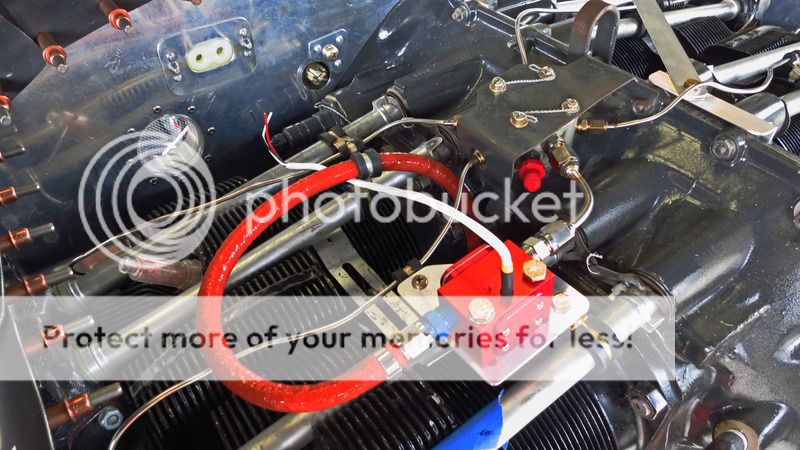
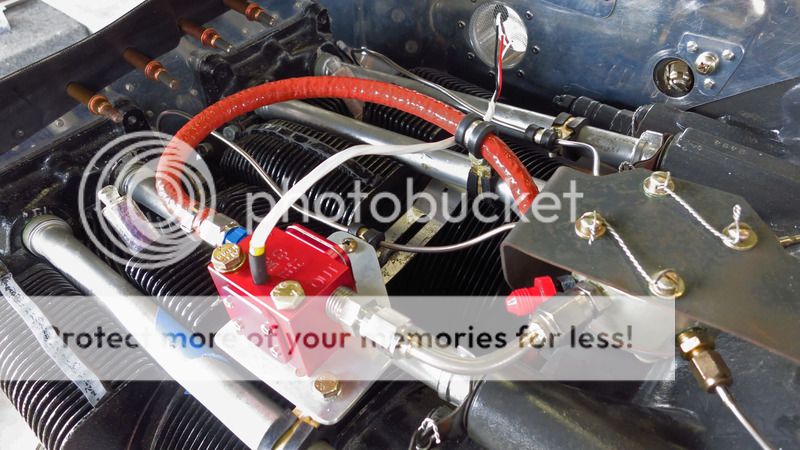
This is Bob Lund's airplane, and as can be seen from the photo below, it's almost ready for first engine start. About all that's left is to hang the 3-bladed MT and finish up some firewall forward details. We used our clear acrylic disk bolted to the crank with spacers to mount the cowl which allows for the correct spacing behind the spinner bulkhead.
Bob wanted to paint the airplane before first flight, which is a first for me, but it has worked out okay so far. Bob built a temporary paint booth in the hangar. First flight will happen by the end of the month.
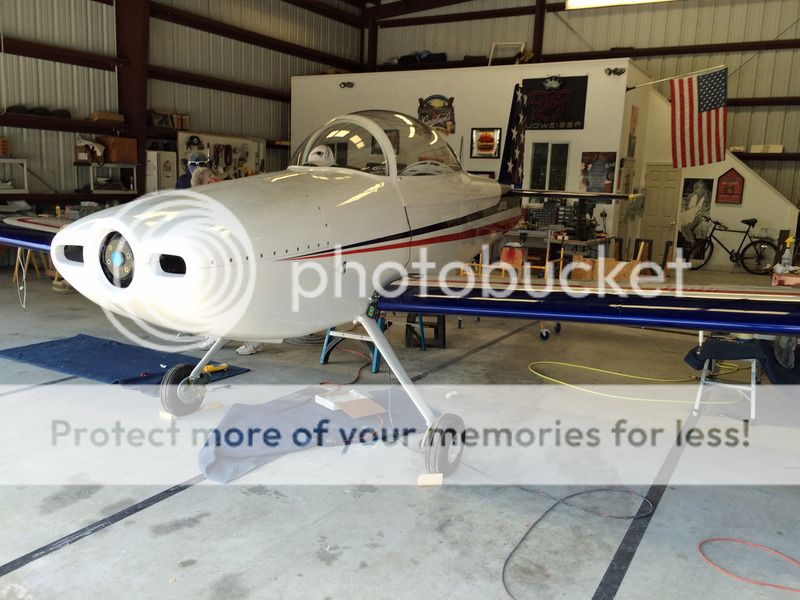
We mounted the Red Cube on a small piece of .090 between two Adel clamps, one was already there for the s.s. fuel line. Worked out well, good support for the Red Cube and the adapter to the flow divider. Tom made up all of our hoses and did a great job as usual! We had to get a longer than normal #4 hose between the servo and FT-60 as you can see below.


This is Bob Lund's airplane, and as can be seen from the photo below, it's almost ready for first engine start. About all that's left is to hang the 3-bladed MT and finish up some firewall forward details. We used our clear acrylic disk bolted to the crank with spacers to mount the cowl which allows for the correct spacing behind the spinner bulkhead.
Bob wanted to paint the airplane before first flight, which is a first for me, but it has worked out okay so far. Bob built a temporary paint booth in the hangar. First flight will happen by the end of the month.




